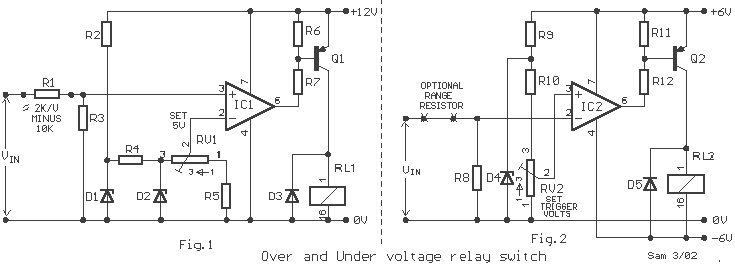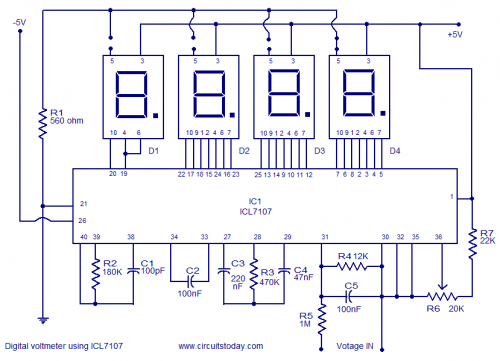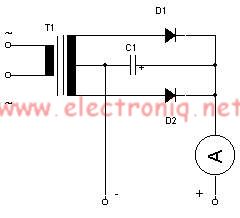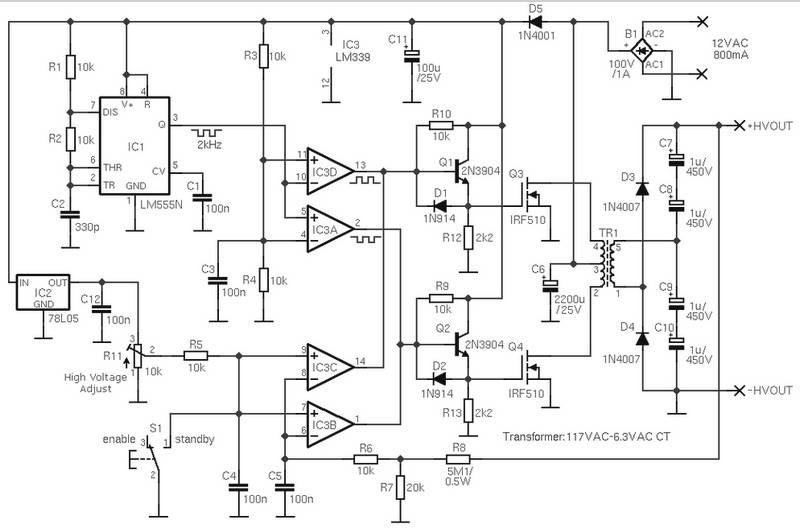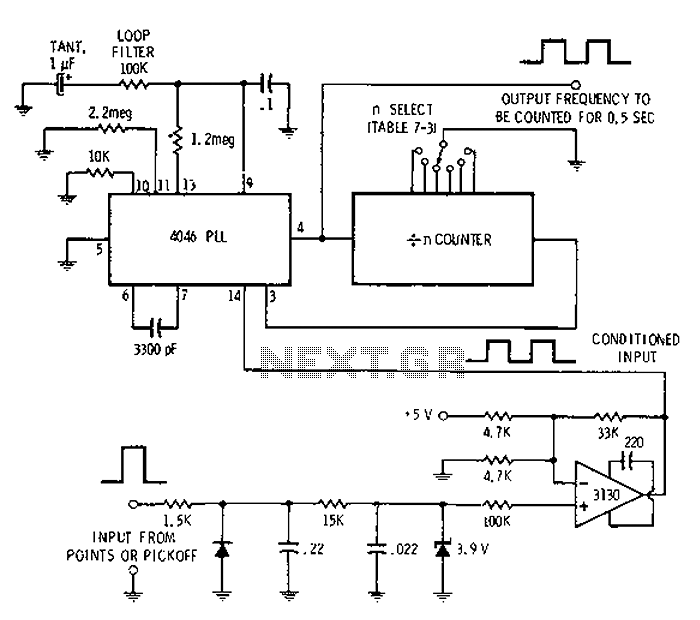
Battery Volt Meter
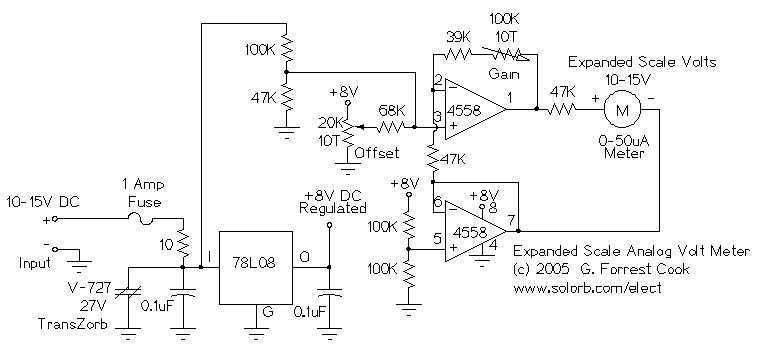
This circuit is used to measure the voltage on a 12V (nominal) lead acid rechargeable battery system. It was specifically designed for use in solar powered systems, but is general enough that it can be used for automotive or other 12V systems. Lead acid batteries normally spend their working lifetime in the voltage range of 11-15 Volts. This meter circuit was designed to show the voltage range of 10-15V on an analog meter movement, it can be used to show the battery charge state from empty to full. More: The input voltage is filtered from transient voltage spikes via the 10 ohm resistor and the 0.1uF capacitor on the input of the 78L08 regulator. The 1 Amp series fuse and Transzorb protect the circuitry from short circuits and over-voltage conditions.
The described circuit functions as a voltage measurement system tailored for 12V lead acid batteries, commonly utilized in solar power applications as well as in automotive contexts. The design is intended to accurately reflect the battery's state of charge by displaying voltage levels ranging from 10V to 15V on an analog meter. This range corresponds to the typical operational voltages of lead acid batteries, which generally operate between 11V and 15V during their charge and discharge cycles.
The circuit incorporates a 78L08 voltage regulator, which stabilizes the input voltage to ensure consistent operation of the meter. To protect the system from voltage spikes that could potentially damage sensitive components, a 10-ohm resistor is placed in series with a 0.1µF capacitor at the input of the regulator. This combination acts as a low-pass filter, effectively smoothing out transient voltage spikes and providing a stable voltage to the regulator.
Furthermore, to enhance the circuit's reliability, a 1 Amp series fuse is included, serving as a safeguard against excessive current that could lead to component damage. In addition, a Transzorb device is implemented to protect against over-voltage conditions. The Transzorb functions as a transient voltage suppressor, clamping excessive voltage spikes and diverting potentially harmful currents away from the circuit.
Overall, this voltage measurement circuit is designed to provide accurate readings of lead acid battery voltages while ensuring protection against common electrical faults, making it suitable for various applications where monitoring battery health is crucial.This circuit is used to measure the voltage on a 12V (nominal) lead acid rechargeable battery system. It was specifically designed for use in solar powered systems, but is general enough that it can be used for automotive or other 12V systems.
Lead acid batteries normally spend their working lifetime in the voltage range of 11-15 Volts. This meter circuit was designed to show the voltage range of 10-15V on an analog meter movement, it can be used to show the battery charge state from empty to full. The input voltage is filtered from transient voltage spikes via the 10 ohm resistor and the 0.1uF capacitor on the input of the 78L08 regulator. The 1 Amp series fuse and Transzorb protect the circuitry from short circuits and over-voltage conditions.
🔗 External reference
The described circuit functions as a voltage measurement system tailored for 12V lead acid batteries, commonly utilized in solar power applications as well as in automotive contexts. The design is intended to accurately reflect the battery's state of charge by displaying voltage levels ranging from 10V to 15V on an analog meter. This range corresponds to the typical operational voltages of lead acid batteries, which generally operate between 11V and 15V during their charge and discharge cycles.
The circuit incorporates a 78L08 voltage regulator, which stabilizes the input voltage to ensure consistent operation of the meter. To protect the system from voltage spikes that could potentially damage sensitive components, a 10-ohm resistor is placed in series with a 0.1µF capacitor at the input of the regulator. This combination acts as a low-pass filter, effectively smoothing out transient voltage spikes and providing a stable voltage to the regulator.
Furthermore, to enhance the circuit's reliability, a 1 Amp series fuse is included, serving as a safeguard against excessive current that could lead to component damage. In addition, a Transzorb device is implemented to protect against over-voltage conditions. The Transzorb functions as a transient voltage suppressor, clamping excessive voltage spikes and diverting potentially harmful currents away from the circuit.
Overall, this voltage measurement circuit is designed to provide accurate readings of lead acid battery voltages while ensuring protection against common electrical faults, making it suitable for various applications where monitoring battery health is crucial.This circuit is used to measure the voltage on a 12V (nominal) lead acid rechargeable battery system. It was specifically designed for use in solar powered systems, but is general enough that it can be used for automotive or other 12V systems.
Lead acid batteries normally spend their working lifetime in the voltage range of 11-15 Volts. This meter circuit was designed to show the voltage range of 10-15V on an analog meter movement, it can be used to show the battery charge state from empty to full. The input voltage is filtered from transient voltage spikes via the 10 ohm resistor and the 0.1uF capacitor on the input of the 78L08 regulator. The 1 Amp series fuse and Transzorb protect the circuitry from short circuits and over-voltage conditions.
🔗 External reference
